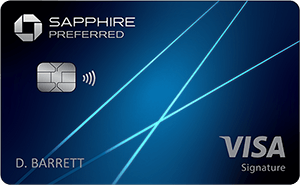AwardWallet receives compensation from advertising partners for links on the blog. The opinions expressed here are our own and have not been reviewed, provided, or approved by any bank advertiser. Here's our complete list of Advertisers.
VantageScore — the credit scoring model created by Equifax, Experian, and TransUnion — was developed to provide a consistent score across all three credit bureaus. It's used by many lenders and plays a major role in credit card approvals.
The company recently released the latest average credit score in the U.S., and if you’re planning to open a new credit card, it’s worth knowing where you stand. Let’s break down the numbers, what they mean, and how your score could affect your next application.
Page Contents
What is the Average Credit Score?
VantageScore has reported that the average American has a credit score of 701 as of September 2025. That’s only 1 point lower than earlier this year — but the trends behind the number tell a more interesting story.
After a busy summer, banks are starting to pull back on new lending. VantageScore’s latest CreditGauge report shows that new credit card, auto loan, and mortgage originations all dipped in September, suggesting lenders are getting a bit more cautious.
At the same time, early-stage delinquencies (30–59 days past due) have climbed to near pre-pandemic levels. Mortgage delinquencies are up too, with late-stage (90–119 days past due) payments hitting their highest point since early 2020.
So while the average score hasn’t dropped much, these signs point to a tighter credit environment — where strong credit habits matter more than ever. Keeping balances low, paying on time, and avoiding too many new inquiries can help you stay above that 701 mark and improve your odds when applying for new cards.
How Credit Scores Work
Credit scores range from 300 to 850, so one might expect the average to be closer to the midpoint of ~600 rather than over 700. Of course, the better your credit score, the better your chances are of being approved for a credit card. According to this article from Chase:
Generally, a “good'” credit score may increase the chances of being approved for most rewards credit cards.
So, what counts as a “good” credit score? The same article lays out the ranges for both the VantageScore and FICO credit scores:
| Category | VantageScore | FICO Score |
|---|---|---|
| Excellent / Exceptional | 781 to 850 | 800+ |
| Very Good | n/a | 740 to 799 |
| Good | 661 to 780 | 670 to 739 |
| Fair | 601 to 660 | 580 to 669 |
| Poor | 500 to 600 | 579 and below |
| Very Poor | 300 to 499 | n/a |
VantageScore credit score ranges
- Excellent: 781 to 850
- Good: 661 to 780
- Fair: 601 to 660
- Poor: 500 to 600
- Very Poor: 300 to 499
FICO credit score ranges
- Exceptional: 800+
- Very Good: 740 to 799
- Good: 670 to 739
- Fair: 580 to 669
- Poor: 579 and below
These ranges show a score as low as ~670 may be considered “good.” However, we generally recommend that you have a score of at least 700 before applying for popular cards such as the Chase Sapphire Preferred® Card.
Although credit score is only part of the equation when banks consider credit card applications, it obviously carries the most weight. Generally speaking, an above-average credit score is needed for approval for the most popular — and lucrative — points-earning cards, so managing your score well is very important.

AwardWallet Credit Resources
AwardWallet has several resources for checking and managing your credit score — as well as tips to improve your credit if needed.
- Beginner's guide to building healthy credit: This guide walks beginners through the steps to get you on the right path to a solid credit history.
- Managing your credit score: This post outlines the basis of credit scores and gives helpful tips on how to manage your score effectively.
- Check your credit score for free: Obtain your free report from all three bureaus on a weekly basis, if desired. This can help you keep tabs on your score and make sure everything looks good.
Final Thoughts
If you’re aiming to open new credit cards — especially those offering big welcome bonuses — understanding your credit score is essential. With the average American credit score now sitting at 701, getting above that threshold can help you stand out to issuers and improve your chances of approval.
Whether you're just getting started or looking to fine-tune your credit profile, having a strategy in place can be the key to unlocking valuable points and miles down the road.
For rates and fees of the cards mentioned in this post, please visit the following links: Chase Sapphire Preferred® Card (Rates & Fees)
The comments on this page are not provided, reviewed, or otherwise approved by the bank advertiser. It is not the bank advertiser's responsibility to ensure all posts and/or questions are answered.



